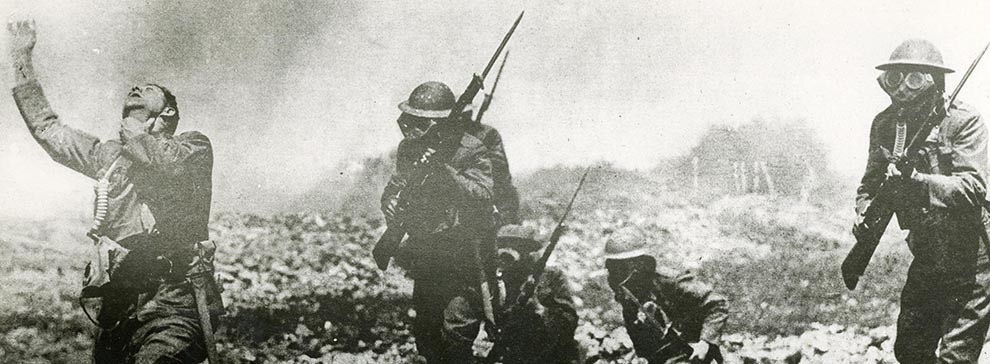
Weapons: Chemical Warfare
Chemical Warfare
One of the hazards of the U.S. Marines, Sailors, and Nurses serving in the front-line area was chemical warfare. Within hours of contact, the chemicals would affect the eyes, causing blindness. Inhaled, it led to respiratory problems and eventually internal bleeding. On the skin, the chemicals led to blisters and burns. For U.S. Marines and Naval personnel serving in the areas, the service men were trained in the use of gas and the effects on the body. General John J. Pershing, USA, appointed Major General William L. Sibert, USA, to lead the Chemical Warfare Service in May 1918. During the war, close to 1,000 U.S. Marine officers and enlisted men were subjected to chemical attacks. In May 1926, France became the first signatory to sign the Geneva Gas Protocol, which condemned the use of chemical and biological weapons in war. Note, Germany signed the protocol in April 1929.
Image: NH 124118: Staged exhibit for training purposes in France, 1918. U.S. Naval History and Heritage Command Photograph.



